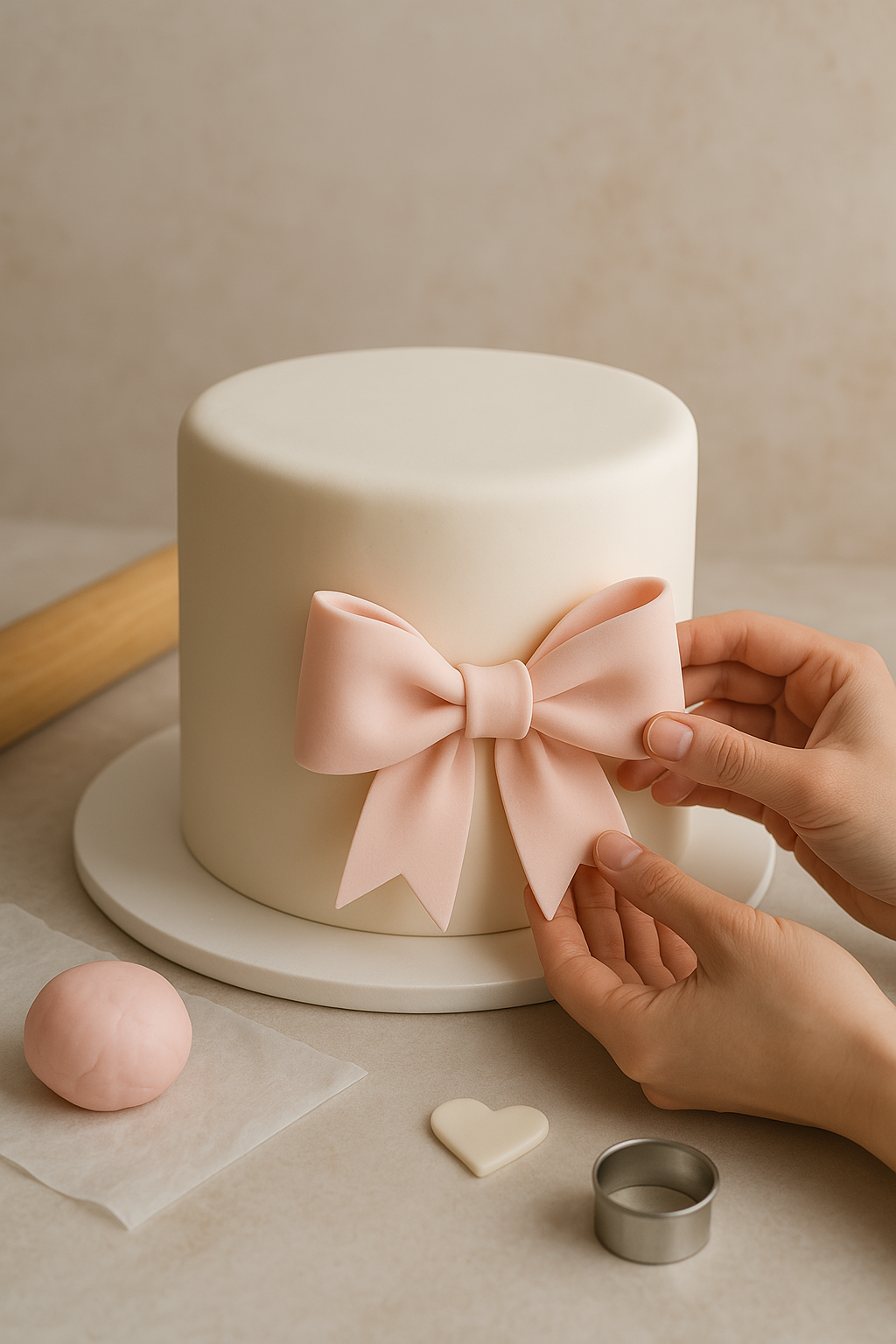Ever stared at a cake so flawless that it looked too good to eat? Chances are, fondant is the magic behind that smooth, picture-perfect finish. Whether it’s an elegant wedding cake or a fun birthday creation, fondant gives bakers the power to turn desserts into edible art. But what exactly is fondant, and why is it such a favorite in the baking world? Let’s break it down.
What is Fondant?
Fondant is a type of sugar-based icing that’s soft, pliable, and easy to shape. Unlike buttercream, which is creamy and spreadable, fondant icing has a firmer, dough-like consistency that can be rolled out and draped over cakes for that ultra-smooth, professional look.
There are two main types of fondant:
- Rolled fondant: The kind you see covering cakes, creating sleek finishes, and making edible decorations.
- Poured fondant: A more liquid version used for coating pastries like éclairs and petit fours.
Besides its aesthetic appeal, fondant also helps seal in moisture, keeping cakes fresh for longer. Plus, it’s a blank canvas for creativity—add colors, textures, or sculpt it into intricate cake decorations.
What is Fondant Made Of?
If you’re imagining a long list of complicated ingredients, don’t worry—fondant is surprisingly simple.
- Sugar: The foundation of fondant, making it sweet and stable.
- Water: Helps blend and dissolve the sugar.
- Gelatin or Corn Syrup: Adds elasticity, preventing cracking and making it easy to shape.
- Glycerin: Keeps fondant pliable and smooth.
- Shortening or Butter: Adds richness and prevents the fondant from drying out.
For chocolate lovers, there’s also chocolate fondant, which incorporates melted chocolate into the mix. It’s a great alternative if you want the elegance of fondant with a richer, more indulgent taste.
Can You Make Your Own Fondant?
Absolutely! While store-bought fondant is a convenient option, many bakers swear by homemade fondant for better taste and texture. If you love baking, making fondant from scratch is surprisingly easy.
Simple Homemade Fondant Recipe
Ingredients:
- 1 bag (about 16 oz) of marshmallows
- 4 cups powdered sugar
- 2 tablespoons water
- 1 tablespoon shortening
- Food coloring (optional)
Instructions:
- Microwave the marshmallows with water in 30-second intervals, stirring until melted.
- Gradually mix in the powdered sugar until a dough-like consistency forms.
- Knead the mixture on a greased surface, adding shortening to keep it from sticking.
- If desired, add food coloring and knead until evenly distributed.
- Roll out your fondant and start decorating!
Making your own fondant not only saves money but also lets you control the flavor, making it less artificial-tasting than some store-bought versions.
Fondant Cake Decorating Tips for Beginners
Want to try decorating your first fondant cake? Here are a few tips to make the process smoother:
Dust with Cornstarch or Powdered Sugar: Prevents fondant from sticking to surfaces.
Roll Evenly: Use a rolling pin with guide rings to keep the thickness uniform.
Apply a Base Layer: A thin coating of buttercream helps fondant stick to the cake.
Smooth It Out: Use a fondant smoother to eliminate air bubbles and wrinkles.
Get Creative: Use cookie cutters, molds, and embossing tools to add unique designs.
Final Thoughts: Should You Use Fondant?
Fondant is a game-changer in cake decorating. It allows for jaw-dropping designs that buttercream simply can’t achieve. Whether you’re working on a sleek wedding cake or an elaborate themed birthday cake, fondant icing gives you complete creative control.
That being said, not everyone loves the taste—some find it too sweet or chewy. If that’s the case, consider peeling it off before eating, or making your own fondant recipes with better flavor. Either way, knowing how to use fondant is a skill that every baker should have in their toolkit.

